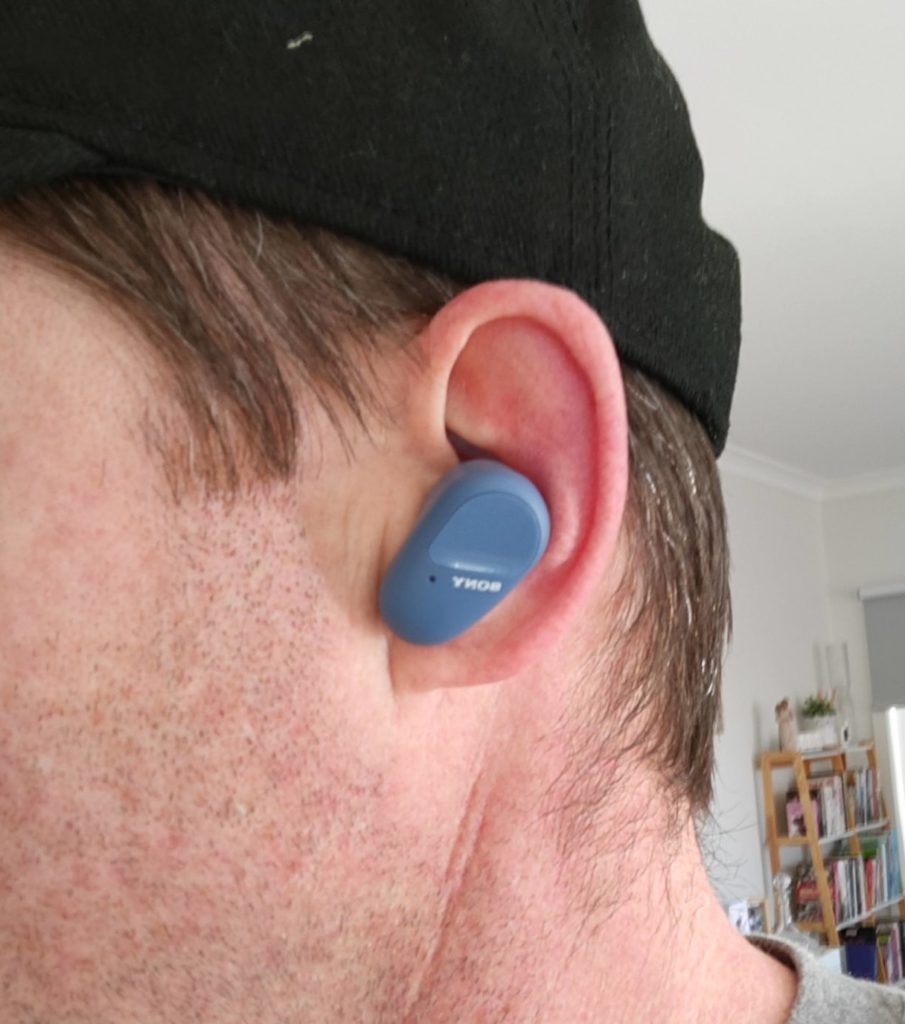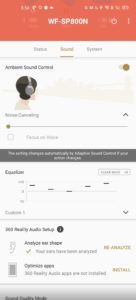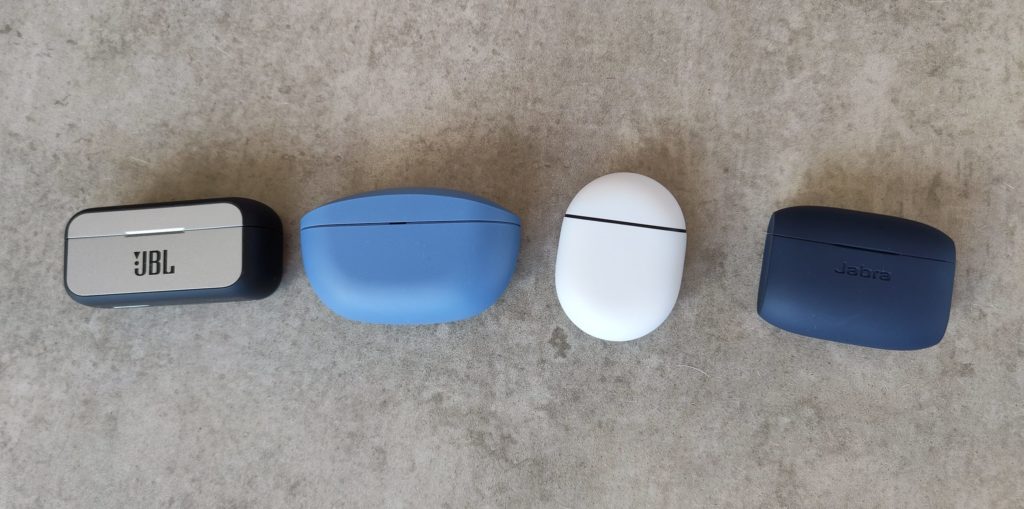Last year Sony wowed everyone with their first foray into the noise cancelling true wireless headphones with the 1000XM3 but the one thing they lacked was any decent form of IP rating. This year Sony have have introduced a set of noise cancelling true wireless headphones just for sports — the WF-SP800N.
We’ve been testing them out for the last few weeks and even with the limitations on being active due to the lockdowns in Melbourne we have what we think is a good handle on them. There isn’t much really to a set of true wireless headphones these days. We will focus on the fit and comfort, the sound (obviously important) including the noise cancelling with a touch on the software and battery life.
So how’s the fit?
Sony have included noise cancelling with less of a focus on noise isolation. Some true wireless headphones focus on a tight secure fit to isolate external noise from the ears. These do not do that.
The WF-SP800N has four different sizes of rubber ear buds and two different sizes of the shark fins — yes Sony like to call them “arc supporters” but I prefer the descriptive term of shark fin. Although these don’t lodge into the ear as tightly as some true wireless the fit, through the sheer number of combinations of fit possible, they can be made to fit snugly into the ear providing some noise isolation.
It took me a while going through the various combinations but in the end I opted for the largest of the fits — large buds, large fins. The fit is very important with these true wireless headphones as the bulk of the weigh in them sit some distance out of the ear canal. In the end the fit was comfortable and although they did not feel as secure as those earbuds that the bulk of them sit directly in the ear canal I never once had them fall out.
As mentioned above though the earbuds do sit a long way out of the ear canal and can thus look strange. No company has managed to crack the noise cancelling equation and kept their earbuds small and fully in ear just yet — although Samsung are close with their latest Galaxy Buds — and Sony are no exception. Until there is some form of miraculous new tech allowing decent sound with decent ANC inside the smaller form factor we don’t expect the size of decent ANC headphones to decrease enough to fit into the ear canal.
How do they sound?
Coming from a company that has excelled with their headphone sound in recent years with arguably the best consumer sound in their Bluetooth offerings you would expect the WF-SP800N to continue this. After listening to them side by side with Pixel Buds and JBL Reflect Flow true wireless headphones the Sony are the best. Sure they are a lot more conspicuous than the other two when in the ear but their sound has a lot more depth to it.
Bass is deeper and louder and the mids and highs are top notch as well. Sometimes a company will gain this extra depth in the sound but sacrifice the crispness of the mids and upper frequencies. Sony have managed to minimise that with the WF-SP800N delivering decent sound in the mid and upper range. Sometimes, especially with me emphasising the bass on the custom equaliser I have chosen, the extra bass can overpower the other frequencies but they are still there and well represented.
Phone calls were crisp and clear and although we tend to often gloss over this feature it is important obviously. The microphone on the WF-SP800N obviously sit out of the ear and are thus able to pick up the voice well without much external noise affecting the call.
Speaking of external noise we do need to talk about the noise cancelling. Rather than active noise cancelling the Sony WF-SP800N have what Sony call their “Digital Noise Cancelling”. Does it make a difference? Yes and by a lot. The noise cancelling is ok, but just ok. It is there and it does work to some degree — just don’t expect it to work as effectively as your over the ear headphones or even the WF-SP800N predecessor, the 1000XM3.
The 1000XM3 had their own noise cancelling QN1 chip but that chip is not included in the WF-SP800N — it is unclear why decision was made but we dare say it was something to do with the IP55 rating they have. Maybe the inclusion of the chip would have made the earbuds too large by the time they were sealed to be waterproof?
In the end the noise cancelling is good enough for around the house but I think they will not be enough to block out an aircraft engine once aeroplane travel resumes. Although I couldn’t test it with airline travel I did test it with the next loudest thing I could find, my car. While it did not block out the loud revving of it entirely I was still able to hear the music/podcast without any issues.
Surely the battery life is great with that size?
Sony say you should be able to get a maximum of nine hours of battery life per earbud (with noise cancelling on) and they are correct. The battery life in these earbuds is better than any others I have tried and I definitely got the seven hours they promised.
The disappointment came with the case. The charging case Sony have included is by far the largest charging case I have seen in a true wireless headphone but it does not have the most amount of charge in it. Sure they needed a decent sized case to fit these relatively large earbuds into but you would expect more than one recharge of the earbuds from a case this large.
The large case also lacks wireless charging which to me is not a huge issue as I can’t really see the reason for that when a quick plug in to charge via the USB-C port gives much more charge.
Any extra features?
There is of course the now-expected Google Assistant and Alexa support along with in-ear detection sensors and the IP55 rating but Sony have included a few other features the deserve mentioning.
The touch controls on each earbud are extremely sensitive and easy too use — there were times where I kept touching them while inserting the earbuds but once in they were easy to use. The touch pads are also customisable within the Headphones app with some decent choices including the Ambient sound control, digital assistant control, volume control and playback controls.
Sony have also added support for their “360 Reality Audio” which they say is “a completely new way to mix and master songs that allows sound engineers to place instruments in a unique way that takes directionality into account making songs sound like you’re listening to a live performance.” Only services such as Tidal and Deezer support this so is of limited use to most of us.
Was there anything I didn’t like about them?
The fit was difficult to find at first but once I got there I was happy with it. It was well worth sticking with trying to find the right fit. Once there, totally worth the effort.
The Sony WF-SP800N are designed for sports, for exercising, and thus probably do not need multipoint pairing. I often use mine headphones for both my phone and my PC simultaneously and was unable to do that for these. IF you decide to buy these though you will be buying them for exercising, for their IP55 rating and thus the lack of multi-point pairing may not be a huge issue. It does make them less useful is other areas of life and at the RRP of $349 you should be able to use them for everything in life.
Conclusion — would I buy them?
The sound out of the Sony WF-SP800N is amazing and one of the best, if not the best, I have heard from any true wireless headphones. The digital noise cancelling, although not as good as active noise cancelling, is decent — good enough for the gym that’s for sure. The fit is good once you manage to figure out the right combination for your ears and ear canal.
They are large and do sit a fair way out of the ear — which does make finding the right fit even more important — but these are designed to be used for exercising, not a fashion parade.
Are they worth $349? That is the 349 dollar question. In the end, even with all the positives it is a struggle to recommend such an expensive pair of true wireless headphones but if you are shopping in this range they are certainly comparable to the best Jabras available which sit at about that price. The Sony sound will have more depth and provide a greater experience and have the added bonus of some form of noise cancelling.
If your budget extends to this then they are definitely worth it but for around $100 less there are a lot of other options which may not quite be up to the Sony WF-SP800N standard but are better value for money.




















